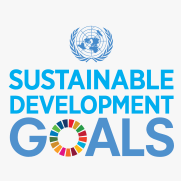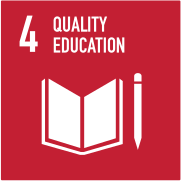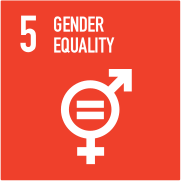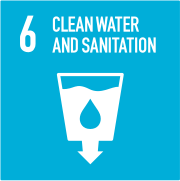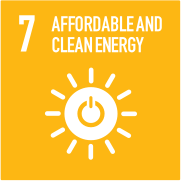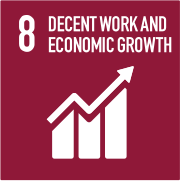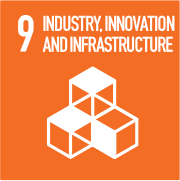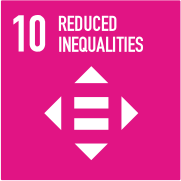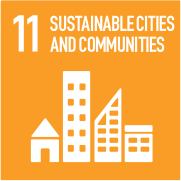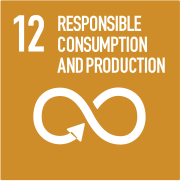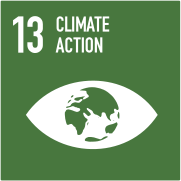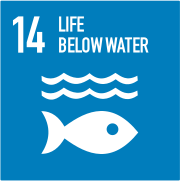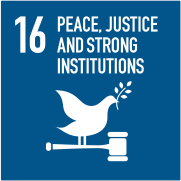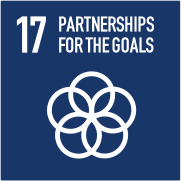SDG Compendium: SDG 11 - Sustainable Cities and Communities
BeMED 20. Tourism and its impact on the Environment
Title Tourism and its impact on the Environment Author Audrey Gauci Age Guide Year 10-11 Subject Area European Studies Preparation Time Research on the impact of tourists on the environment – especially in relation to marine litter. Preparation of interview / questionnaires to conduct an investigation in a touristic village Estimated Duration 40 mins – reporting skills 40 mins – creation of investigation 40 mins – evaluation and reporting of investigation Site Any touristic locality Educational objectives Develop one of the European Studies projects by investigating and reporting on tourism and its impact on marine litter. Project Titles – The Impact of Tourism on the Environment Research, investigate and critically analyse themes: Protection of the Environment Candidates should be able to: – identify and understand the sources of air, land, water, noise and light pollution. – demonstrate some awareness of the possible environmental damage and solutions through the following case studies: the Mediterranean Sea and the Blue Plan. – identify and explain preventive measures to lessen their impact. – demonstrate an understanding of the extent to which modern farming practices, industry, tourism and transportation in Europe are responsible for environmental damage. Sustainable Development Candidates should be able to: – identify and understand the conflict of interest inherent between conservation and development in Europe, especially in the Mediterranean regions. Learning Outcomes Information management: – I can define the term sustainable development and its three pillars: economic, social, environmental. – I can analyse and explain the term biodiversity. I can discuss some of the threats it is experiencing, e.g. urbanisation, deforestation, over hunting/fishing. – Through examples I can identify and list conflicts of interest between economic development and environmental conservation. – I can discuss the concept of marine sustainability and pollution prevention giving examples drawn from the Mediterranean area, e.g. fisheries policy , Blue plan, Blue flags. – I can define and discuss the concept of Blue flag in terms of sustainable development of beaches and marinas. – I can analyse the benefits of having a sustainable fishing industry in the Mediterranean, drawing on examples of the bluefin tuna and swordfish. – I am aware of which sources I can consult to learn more about the EU’s environment and fisheries policies. – I can actively participate in processes and encourage negotiations for alternative sustainable futures. – I will challenge unsustainable practices across educational systems, including at the institutional level. Link to SDGs SDG 4: Quality education for all SDG 11: Sustainable Cities and Community SDG 13: Climate Change SDG 14: Life below water SDG 15: Life on land Educational resources required 1. Video tutorials on reporting: https://www.yre.global/video-tutorials 2. Interview guide: https://www.scholastic.com/teachers/articles/teaching-content/how-conduct-journalistic-interview/ 3. Case study on Sustainable tourism:- https://www.yre.global/international-collaboration-2/2020/9/23/sustainable-tourism-is-it-possible Remote preparation As part of their European Studies project work, student need to investigate and draw a report on one of 5 topics. One of the themes is Tourism and its impact on the Environment. Since both investigation and reporting are required, a session on appropriate reporting skills is carried out before the students actually go outside the school. Informative tutorials can be accessed online (Educational …
MoreBeMED 18. Young journalists in action!
Title Young journalists in action! Author Audrey Gauci Age Guide Year 7-10 Subject Area English Language (but can be adapted to other languages) Preparation Time Preparation of interview / questionnaires to conduct an investigation in a coastal village/town. Estimated Duration 20 mins – reporting skills 20 mins – information session on marine litter 40 mins – discussion and creation of interview questions 40 mins – investigation outside school / online 40 mins – evaluation and reporting of investigation Site Any site related to the theme chosen – preferably a coastal area where marine litter is most prominent. Educational objectives – Adhere to the requirements of the English syllabus in relation to report writing – Learn how to investigate, be critical and assess comments and opinions expressed by others – Express themselves in journalistic-style writing – Work in teams Report Writing Report writing involves the production of a formal, informative and systematically presented text concerning a situation, person, place or plan. Report writing needs to evidence three clear characteristics: (a) adherence to the original request or brief; (b) a sustained perspective of who the report is supposedly being written by; and (c) an awareness of intended audience. Candidates should be able to: – Select which type of report to write in response to a question. – Employ a formal style of writing. – State the purpose of the report in the introductory paragraph. – Organise content by means of separate paragraphs clearly marked with subheadings. – Demonstrate an awareness of intended audience. Learning Outcomes Creative learning: – I can participate in writing for a wide range of purposes and genres. Expressive language: – I can report, both in speech and in writing, what others have said or written. Managing learning – I can edit and revise my own writing. – I can write appropriately for an audience and with a purpose. – I can vary what I write according to the intended reader Learning to know: – I can justify the importance of identifying problems, reflecting critically, thinking creatively and having a wider vision in order to plan for the future and become an effective agent of change. Learning to do: – I can use the natural, social and built environment that surrounds me, as a context and source of learning. Learning to be: – I am a critically reflective person and am able to evaluate decisions, choices and actions. Learning to live together: – I will challenge unsustainable practices across educational systems, including at the institutional level. Link to SDGs SDG 4: Quality education SDG 11: Sustainable Cities and Community* SDG 13: Climate Change SDG 14: Life below water* SDG 15: Life on land* *depends on the theme students select Educational resources required Video tutorials on reporting, in particular to report writing: https://www.yre.global/video-tutorials Interview guide: https://www.scholastic.com/teachers/articles/teaching-content/how-conduct-journalistic-interview/ Appendix 18.1 – Optional PowerPoint (Kindly send email on [email protected] if you wish to obtain this Powerpoint) Internet connection Remote preparation Since both investigation and reporting are required, a session on appropriate reporting skills is …
MoreBeMED 17. Investigating the effects of marine litter on sea water temperature and pH level
Title Investigating the effects of marine litter on sea water temperature and pH level Author Ramona Mercieca Age Guide Year 7-8 Subject Area Geography, Integrated science Preparation Time 1 hour Estimated Duration Data collection 10 mins daily spread over 2 months Site School ground Educational objectives To develop fieldwork skills such as collecting and recording data To learn more about the effects of marine litter Learning Outcomes – I can justify the importance of identifying problems, reflecting critically, thinking creatively and having a wider vision in order to plan for the future and become an effective agent of change. – I can use the natural, social and built environment that surrounds me, as a context and source of learning. – I am motivated to make a positive contribution to other people and their social and natural environment, locally and globally. – I can reflect upon the consequences of my actions on present and future generations. Link to SDGs SDG 3: Good health and well-being SDG 4: Quality education SDG 11: Sustainable cities and communities SDG 12: Responsible consumption and production Educational resources required 2 big glass jars Sea water Plastic litter Digital pH reader Digital thermometer Data logger to measure air temperature, humidity and air pressure GLOBE Observer App to record cloud type and cover (optional) Appendix 17.1 – Data sheets Remote preparation Organize a beach clean-up event. Marine litter collected to be taken at school to be used in investigation. Collect sea water samples in a small jerry can. Planning Considerations Very important to focus on the FACTS, especially when researching and collecting data about the effects of marine litter. For beach clean-up event: · Healthy and Safety information (stay in groups, stay away from the sea and cliffs, hazard of roads and weather). · Brief outline of day and objectives for the day. Set up the day’s investigation aim and consider hypotheses. Toilet stops and time for the lunch break. · Risk assessment/class list/medication/first aid kits Method Introduction In this activity students will investigate the effects of plastic litter on sea water temperature and sea water pH levels. Two large glass jars are filled with the same amount of sea water. In one of the jars the students put some plastic litter collected during the beach clean-up event done beforehand. The glass jars are to be placed outside exposed to the sun and rain. Development Every day students will take three readings of the sea water temperature and pH level from both jars and calculate the mean of the three samples. Moreover, the students will measure the air temperature, humidity and air pressure, describe the general outlook of the weather and observe cloud cover using the GLOBE Observer App (optional). Information collected is filled in the data sheets (Appendix 17.1). Conclusion Once all data is collected students will present it in a graph and analyze it through mean values of repetitions (pH and temperature) by jar to both treatments (with plastics, without plastics). The mean values are to be plotted along the …
MoreBeMED 16. Outdoor Classroom Activity – Beach Fieldwork
Title Outdoor Classroom Activity – Beach Fieldwork Author Ramona Mercieca Age Guide Year 7 Subject Area Geography Preparation Time 1 hour Estimated Duration 4 hours Site Coastal Area Educational objectives To further students’ map reading skills. To develop fieldwork skills such as collecting and recording data. To learn more about their local area and describe how litter make them feel. Learning Outcomes – I can use the basic mapping skills which include a scale, a legend and compass points to plan journeys, latitudes and longitudes to locate places. – I can use appropriate sources to observe and record local weather. – I can justify the importance of identifying problems, reflecting critically, thinking creatively and having a wider vision in order to plan for the future and become an effective agent of change. – I can use the natural, social and built environment that surrounds me, as a context and source of learning. – I am motivated to make a positive contribution to other people and their social and natural environment, locally and globally. – I can reflect upon the consequences of my actions on present and future generations. Link to SDGs SDG 3: Good health and well-being SDG 4: Quality education for all SDG 11: Sustainable cities and communities SDG 12: Responsible consumption and production Educational resources required A4 map of beach site x1 (per group) Appendix 16.1 – Group Recording Sheets X5 (per group) Appendix 16.2 – Litter Survey Sheet x1 (per group) Pencils Clipboards Digital cameras Data logger Thermometer Digital pH reader GLOBE Observer App – optional Small container X1 (per group) Remote preparation Teacher needs to prepare the resources as indicated in the previous section. The outdoor classroom activity will be an opportunity for students to apply the knowledge and skills learned during geography lessons like using a map, observing and recording the weather, locating beach site using the coordinates. Before the outdoor classroom activity the students will do research about marine litter – its sources and effects on the marine environment. Planning Considerations It is very important to focus on the FACTS, especially when researching and collecting data re marine litter. Healthy and Safety information (stay in groups, stay away from the sea and cliffs, hazard of roads and weather). Brief outline of the day and objectives for the day. Set up the day’s investigation aim and consider hypotheses. Toilet stops and time for the lunch break. Risk assessment/class list/medication/first aid kits. Method Activity Outline: Half the day is spent at the beach collecting field data on weather, sea water temperature, sea water pH level and doing a litter survey. Introduction Introduce site and locate it on the map of the Maltese Islands. Briefly introduce the history of the area (fishing and tourism and coastal erosion). The students will be split in groups and each group will select a leader and is given a pack with the group’s recording sheets and a small container. Development Students explore and investigate the beach site by answering the questions on the …
MoreBeMED 13. BIDMAS with Marine Litter
Title BIDMAS with Marine Litter Author Christian Saliba Age Guide Year 6 Subject Area Mathematics Preparation Time Nil Estimated Duration 45 – 50 minutes Site Classroom Educational objectives Through problem solving and the practice of addition, subtraction, multiplication and division, the students will learn about the harm so many items are causing on our environment when we throw them away haphazardly, regardless of the length of time they take to decompose. Learning Outcomes – I can select and use an appropriate operation and strategy when solving a problem. – I can rehearse adding/ subtracting ThHTU ± ThHTU using informal and standard written methods. – I can check the result of a calculation and/or real life problem by using an equivalent calculation or an inverse operation. – I can use the relationship between addition and subtraction. – I can consolidate the understanding and the usage of the four operations. – I can use written methods for: HTU × TU/U. Link to SDGs SDG 3: Good health and well-being SDG 11: Sustainable cities and communities SDG 13: Climate action SDG 14: Life below water Educational resources required Small whiteboard per group Appendix 13.1 – Fact sheet Appendix 13.2 – Flashcards with the questions (need to be printed and cut separately) Appendix 13.3 – Questions and answers for teachers Timer/alarm Internet connection Remote preparation The teacher will discuss with the students the damage done to marine life. The students will also be provided with a fact sheet (Appendix 13.1) which will give them information on how long it takes for different types of litter to decompose. Planning Considerations It would be interesting to take the students near the seashore, and see floating litter, or litter on the shore, to become more aware how serious and actual this problem is. An alternative to the outing, one can show the following videos showing the local marine litter. · https://www.youtube.com/watch?v=67sGc_CWkVI · https://www.youtube.com/watch?v=780hcUlJtF8 Method Introduction This activity is targeted for students in year 6 who already have the knowledge and ability to work out sums in addition, subtraction, multiplication and division. Marine litter will be incorporated with story sums to increase awareness regarding marine litter. o Development The class is divided into 4 groups – A, B, C, D – at the beginning of the lesson. A small white board will be given to each group. A video (https://www.youtube.com/watch?v=Yomf5pBN8dY) related to marine litter is shown to the students, after having told them to pay attention since afterwards they will need to participate in a conversation related to what they see in the video. When the video ends, the educator will ask the students to describe what they have seen and mention some facts. After the introductory video the competitiveness and fun will kick in. The student will be shown another video related to marine litter but this time the students will be asked to write items that contaminate marine life as shown on the video (https://www.youtube.com/watch?v=017bBeXhYz4). This video is “Sources and impacts of marine litter” by Jane …
More